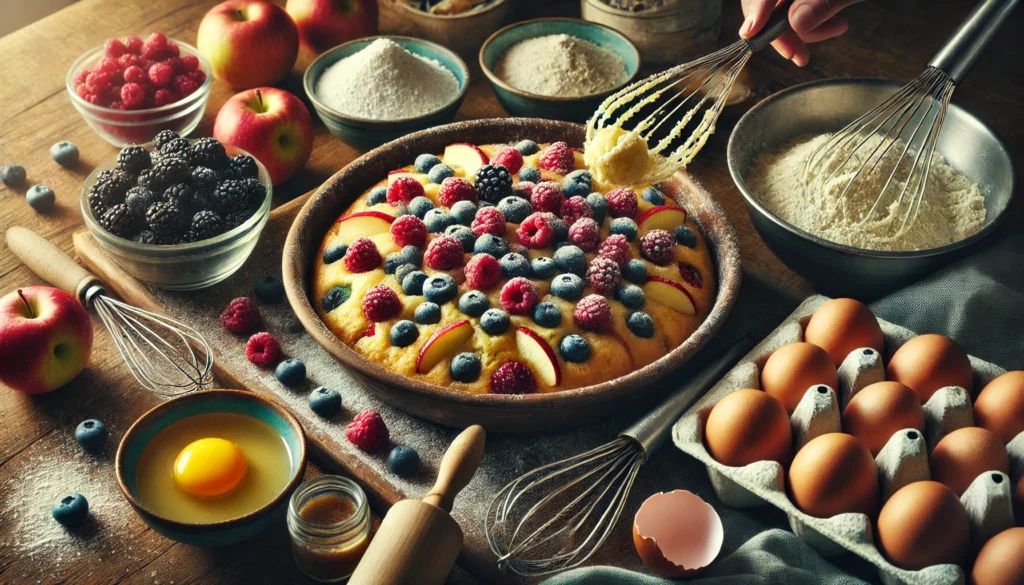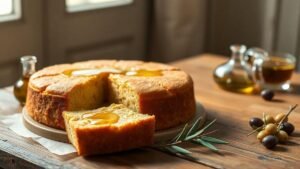Adding fruit to cake can take it from simple to sensational—but if you’re not careful, it can also make your cake wet, dense, or even undercooked. The good news is: you can enjoy delicious, juicy fruit in your cakes without ruining the texture.
In this article, you’ll learn how to add fresh, frozen, or dried fruit to your cake the right way—so it stays soft, balanced, and never soggy.
Why Does Fruit Make Cake Soggy?
Fruit is full of water and natural sugars. During baking, fruit can:
- Release juice into the batter
- Sink to the bottom of the pan
- Create wet pockets or gummy spots
- Interfere with proper rising and baking
But with the right prep, fruit and cake can be a perfect match.
Best Types of Fruit for Baking
- Fresh berries (strawberries, blueberries, raspberries)
- Firm fruits like apples, pears, peaches
- Mashed or sliced bananas (add moisture and sweetness)
- Pineapple, mango (drain well)
- Raisins, cranberries, dates (great for structure and sweetness)
Tips for Adding Fruit Without Making Cake Soggy
1. Pat Fruit Dry
Wash fruit, then use paper towels to dry it thoroughly before adding to the batter.
2. Toss in Flour
Lightly coat cut or whole fruit in 1–2 teaspoons of flour before mixing into the batter. This:
- Absorbs excess moisture
- Helps the fruit “stick” in place (no sinking)
- Creates a barrier between fruit and batter
3. Use Thick Batter
Choose a batter with a slightly thicker consistency—this helps suspend the fruit better and resists sogginess.
4. Avoid Overripe Fruit
Overripe fruit = more water = soggier cake. Use ripe-but-firm fruit instead.
5. Mix Gently
Fold fruit in at the very end, just before pouring the batter into the pan. Don’t overmix!
When to Layer Fruit Instead of Mixing
If using a lot of fruit (especially juicy kinds like strawberries or peaches), consider:
- Layering between batter: Pour half the batter, add fruit, top with the rest
- Arranging on top: Fruit bakes into the top for a rustic look
- Using as filling: Add fruit after baking with whipped cream or custard
Fresh vs Frozen vs Dried Fruit
Fresh
- Best flavor and texture
- Must be dried and floured
- Cut to bite-sized pieces
Frozen
- Can be used directly—do not thaw
- Still toss in flour
- May tint batter slightly (especially berries)
Dried
- No sogginess risk
- Great in dense cakes and spice cakes
- Can be soaked briefly in juice, tea, or rum for extra flavor
Flavor Ideas: Cakes That Love Fruit
- Lemon Blueberry Cake – Tart and bright
- Apple Cinnamon Loaf – Perfect for fall
- Banana Walnut Cake – Soft and naturally sweet
- Strawberry Vanilla Layer Cake – Gorgeous and fresh
- Carrot Raisin Cake – A classic combo
Extra Pro Tips
- Use parchment paper on the bottom of the pan for easy release
- Don’t overfill the cake with fruit—too much = too wet
- Bake immediately after mixing
- Check doneness in multiple spots (fruit can create wet zones)
Storage
- Most fruit cakes last 2–3 days at room temperature
- Refrigerate if using fresh berries or creamy fillings
- Freeze baked fruit cakes (without frosting) for up to 1 month
Fresh Flavor, No Soggy Mess
Adding fruit to cake is an easy way to bring freshness, color, and natural sweetness to your bakes. With a few smart techniques, you can keep your cake light, fluffy, and full of fruit flavor—without soggy surprises. Ready to give your cake a fruity upgrade?






